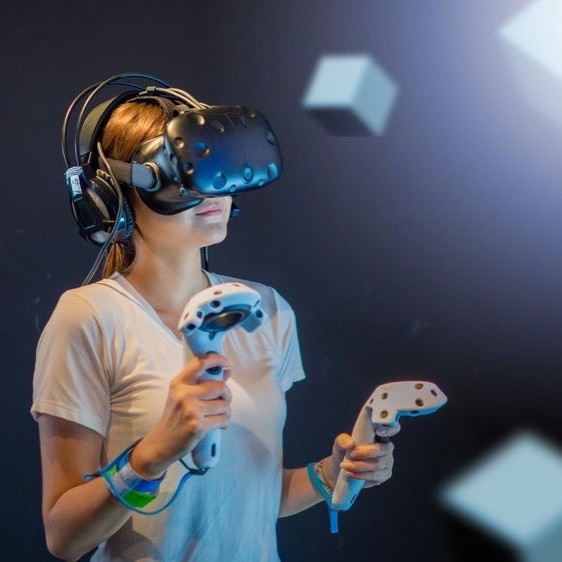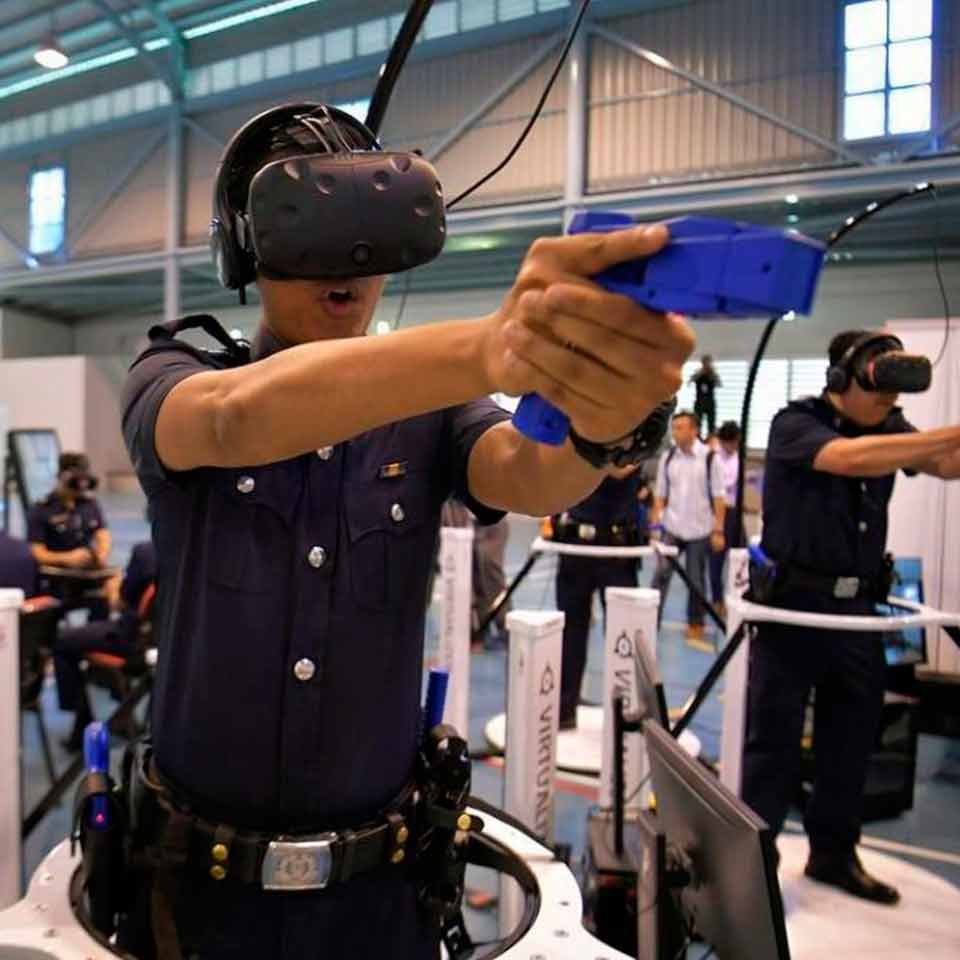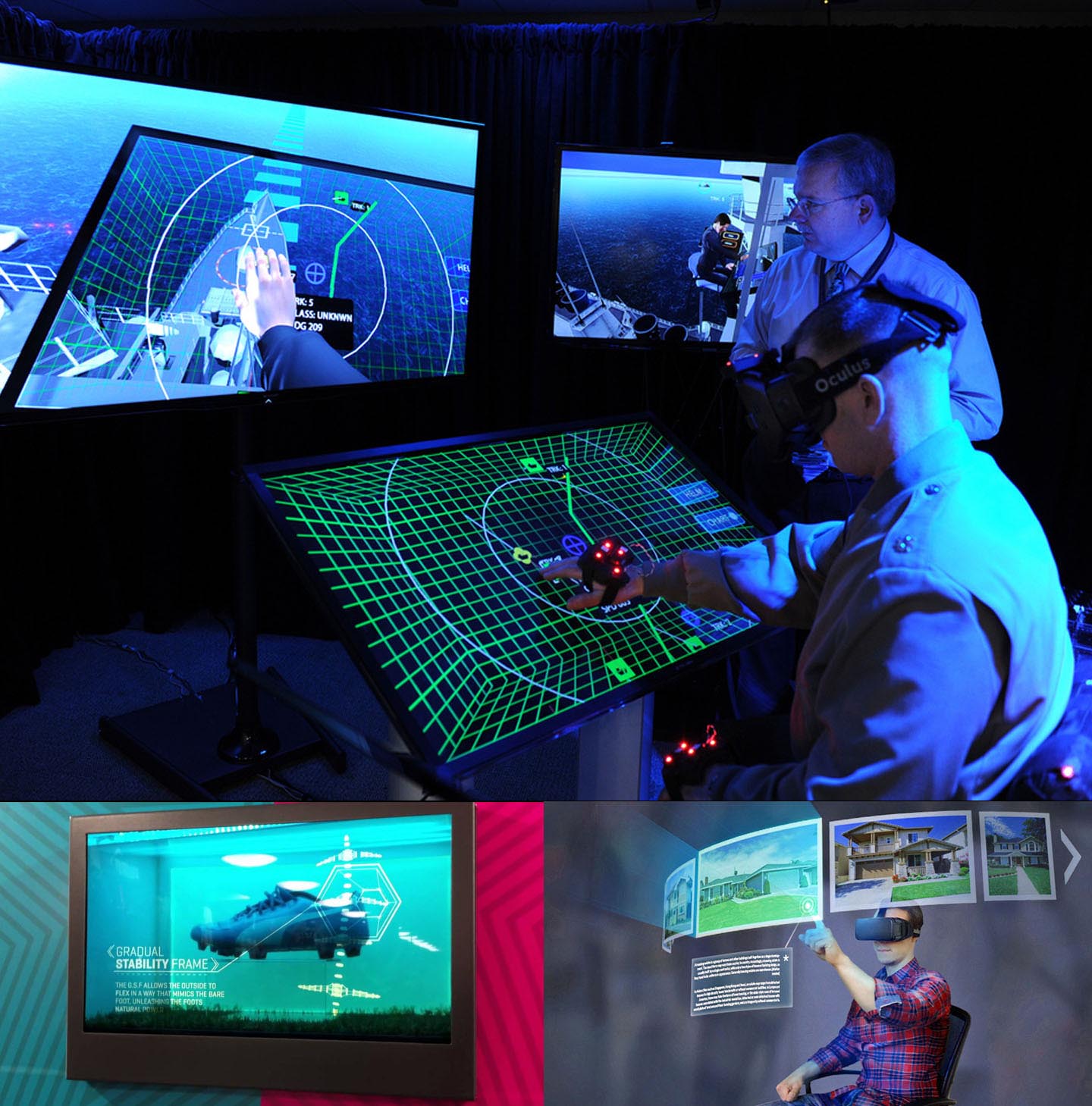Growing in your career and boosting company success both start with professional development. As jobs change faster than ever, those who can learn quickly and adapt are set to succeed.
Traditionally, professional development has relied on a mix of on-the-job training, seminars, workshops, and self-study programs. Professionals are ditching traditional training wheels for something flashier – Virtual Reality (VR). It’s not only about wearing goggles; it’s about immersive learning experiences that stick.
Virtual Reality, a computer-generated simulation of an environment, allows users to immerse themselves in lifelike scenarios and practice skills in real-time. With this new tech on the block, professional training isn't just accessible; it grabs your attention and leaves a mark. Peek into what's next for honing your craft with a VR headset - advantages, uses, and obstacles that are no match for this tech marvel. Picture this - with VR, training takes on new dimensions, making waves among businesses and individual learners.
The Traditional Landscape of Professional Development
Historically, professional development has been characterized by classroom-based learning, textbooks, and passive observation. Workshops and seminars, while offering opportunities for interaction, often lack the ability to provide hands-on experience in a safe, controlled environment. Live training sessions can break the bank, struggle to mimic real-world conditions accurately, and sometimes fall short on delivering consistent quality.
 Traditional training approaches often fall short because they can't match everyone's unique way of learning or speed, leading to a mix of results. The passive nature of some instructional methods also leads to lower retention rates, as learners are not always actively engaged in the learning process.
Traditional training approaches often fall short because they can't match everyone's unique way of learning or speed, leading to a mix of results. The passive nature of some instructional methods also leads to lower retention rates, as learners are not always actively engaged in the learning process.
Imagine slipping on a headset and stepping into another reality. That's what understanding virtual reality tech is all about—transforming the imaginary into something almost tangible.
Think of VR as a puzzle with three major pieces holding everything together. For a seamless experience across pixels and polygons—arm yourself with stellar headsets, precise controllers,and game-changing software. With this headset on, your surroundings vanish, replaced by an immersive digital universe that feels just as real.
With controllers in hand, users dive into a virtual reality where every action mirrors real life. Imagine the software as your virtual world's brain, steering everything according to how users interact with it.
As you explore, VR cleverly tracks where you're heading and updates its virtual landscapes to match in a snap. Suddenly, the digital world feels like a second home – alive and bubbling with possibilities that keep your eyes glued to the screen. The journey of tech advancements hasn't slowed down; it’s racing faster than ever! Now our screens dazzle us with stunning graphics, easy-to-navigate menus greet us warmly at each click or tap and plunging into virtual realms is becoming indistinguishable from reality.
Evolution of VR: From Gaming to Professional Training
Initially popularized in the world of gaming, VR has quickly found applications beyond entertainment. Its potential for professional development was recognized early on, but it is only in recent years that the technology has matured enough to be widely adopted in this field. Virtual reality has come a long way, starting with simple simulations for soldiers to now helping doctors, pilots, and countless professionals in various fields sharpen their skills through high-tech training.
With cutting-edge updates, using virtual reality for career growth isn't just possible; it's become straightforward and handy. Now that VR tech costs less and comes with straightforward software, there's a whole world of interactive education opportunities sprouting up everywhere you look.
VR Training Software
With VR training software like https://pixaera.com/platform/, it’s like stepping into a new reality where learning has no limits. Imagine flipping the switch on an engine designed to bring your lessons off the page and into action.
VR training software is the key to creating effective and engaging learning experiences. There are two main types: custom solutions designed for specific training needs and off-the-shelf software catering to a broader audience. Imagine crafting an exact replica of your workplace challenges for training purposes. That’s what custom options offer—safe yet authentic spaces for employees to grow and adapt. Off-the-shelf options offer more generalized training modules, such as workplace safety, soft skills development, and technical skill enhancement.
Imagine learning without limits - that's what this software duo brings to virtual reality training, making it way more adaptable and scalable compared to the old ways. By choosing tailored training plans or grabbing one that’s already made, firms are unlocking potential like never before in nurturing their talent.
Why VR Training is Stepping Ahead of Old-School Methods
The immersive nature of VR training offers a highly engaging and effective learning experience. Through VR, you're plunged into lifelike situations to practice and sharpen your abilities safely away from real-life stakes. Diving into something hands-on doesn't just make skills stick better; it also keeps them in your memory longer than the old-school way of learning.
Dive into VR training, and you'll find it's not just a game-changer; it boosts engagement, cranks up the learning dial, and locks in info like never before. With VR, you're the boss of your learning journey—pick up things as fast or slow as you like, all in a way that clicks with just how you learn.
Dive into the Action with VR-Based Professional Training Programs
Virtual reality isn't just for gaming anymore - it's revolutionizing professional growth and innovation in sector after sector today. Ready for a few real-life instances? They truly highlight its adaptability and influence.
 Imagine a world where your health journey is supported by the latest advances and genuine concern—that's what healthcare aims to be. Surgery simulations allow medical students and professionals to practice intricate procedures without the risk to real patients. Virtual reality is now our ally in medicine - offering doctors and nurses hands-on experience by interacting with patients that only exist in a digital realm but feel surprisingly real.
Imagine a world where your health journey is supported by the latest advances and genuine concern—that's what healthcare aims to be. Surgery simulations allow medical students and professionals to practice intricate procedures without the risk to real patients. Virtual reality is now our ally in medicine - offering doctors and nurses hands-on experience by interacting with patients that only exist in a digital realm but feel surprisingly real.
- Military: The military has been using VR for combat training for years. Imagine putting on a headset and stepping into any battlefield around the world - that's what today’s military does with VR. It prepares them for anything, anywhere, without actual danger or draining resources.
- Aviation: Imagine stepping into the shoes of a pilot without leaving the ground – that’s what flight simulators offer. But now, thanks to breakthroughs in VR tech, everyone from those guiding planes on runways down below or keeping aircraft flying smoothly above can get real-world practice sessions under safer skies..
- Manufacturing: In manufacturing, VR training assists workers in mastering the operation of complex machinery, practicing safety protocols, and conducting maintenance in a simulated environment that mirrors their actual workspace.
- Corporate Training: Leadership finesse and unbeatable customer interaction aren't just nice-to-haves anymore; through immersive VR sessions, businesses ensure their teams master these essentials effortlessly. Employees can role-play challenging interpersonal situations, manage virtual teams, and practice public speaking within a realistic, yet controlled environment.
Each industry tailors VR experiences to its requirements, ensuring that the skills learned are directly applicable to the job. The sharper these computer-generated environments are, the quicker we all learn. It’s like upgrading your brainpower with every new version of the software!
Overcoming Challenges and Limitations of VR Training
Despite its many advantages, VR training is not without its challenges. The cost of implementing VR, including the hardware and development of software, can be prohibitive for some organizations. Accessibility concerns also arise, as individuals may experience discomfort or disorientation with prolonged use of VR headsets.
For those worried about the price tag, there are budget-smart VR tools out there designed for stretching your dollar through scalable and repeatable training experiences. For accessibility and comfort, continual advancements in VR hardware aim to make headsets lighter, more comfortable, and less likely to cause motion sickness.
Then there's creating the actual training material, which can't be overlooked. Creating realistic VR training modules requires expertise not just in VR technology but also in educational design. Companies often find themselves reaching out to expert VR content creators to whip up training programs that hit the mark, tailored just for them.
The Future of VR Training: Trends and Predictions
The future of VR training looks bright with several emerging trends that promise to enhance its effectiveness further:
 AR Integration: Augmented Reality (AR), which overlays digital content onto the real world, is beginning to integrate with VR to create mixed reality (MR) experiences. Imagine stepping into training sessions that come alive, feeling both real and incredibly interactive.
AR Integration: Augmented Reality (AR), which overlays digital content onto the real world, is beginning to integrate with VR to create mixed reality (MR) experiences. Imagine stepping into training sessions that come alive, feeling both real and incredibly interactive.
AI Personalized Learning: Artificial Intelligence (AI) is paving the way for adaptive learning paths within VR training. Imagine AI as your personal coach, tweaking your study material to poke at those tricky bits you haven't quite mastered yet.
Wearable Technology: The integration of haptic feedback suits and other wearables with VR can enhance the realism of simulations, allowing users to feel physical sensations that correspond to virtual activities.
Social Learning: Future VR training platforms may support multi-user environments, where professionals can practice and learn together in virtual spaces, regardless of their physical location.
With tech advancements just around the corner, getting lost in ultra-realistic VR environments is about to become an everyday thing—more intuitive for everyone. So, VR is set to majorly shake up professional growth. Teams jumping on the VR bandwagon are poised to leave their competition in the dust.
Implementing VR Training in Your Organization
Integrating VR into an organization's training program requires careful consideration of both the organization's needs and the technology's capabilities.
Here's a guide to help navigate this process:
- Assess Needs: Determine the organizational requirements and the types of skills that VR training could most effectively enhance.
- Budget: Consider the budget available for VR training, factoring in the costs of hardware, software, and content development.
- Pilot Program: Start with a pilot program to assess the effectiveness of VR training for your organization and to fine-tune the approach before a wider rollout.
- Select a Vendor: Choose a VR training solution—whether off-the-shelf or custom—based on the quality of experiences, scalability, and the vendor's expertise in your industry.
- Train the Trainers: Ensure your staff is well-equipped to implement VR training by providing them with the necessary knowledge and support.
Switch things up with VR-based methods in teaching sessions; it brings something fresh to the table—lifting worker abilities and offering tangible progress you can see.
Also read:
- Congratulations, Buffoons! We Did More Global Warming Last Year Than in Any Other Year in Human History
- Mist: The Free Meal Planner That Counts Calories and Builds Your Daily Menu
- The Empire is in Decline
Conclusion
In essence, navigating through the elite property market hinges on more than mere chance - insight into evolving desires coupled with stellar service wins every time.
Now that we've introduced VR into our learning toolkit, mastering new abilities feels like stepping into another world - literally. With this tool at your fingertips, expect to be plunged into scenarios so real yet completely under control. Training has never been this effective or memorable before.
The road ahead for virtual reality has its fair share of bumps — cost and getting your hands on it aren’t small ones. Yet there’s a strong vibe that these issues are going to fade into the rearview mirror over time. Professionals considering new strategies should not overlook VR; it’s tailor-made for skill enhancement, pushing productivity levels up while ensuring you don't fall behind. The fusion of VR and professional development is not just a trend; it is the next step in the evolution of learning and training.






